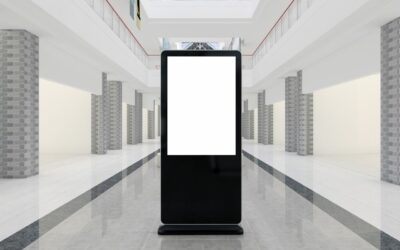At its core, a vehicle wrap is a dynamic outdoor advertising medium that has a very limited time frame to catch your customer’s eye, and convey your message. With digital printers becoming more and more affordable, the skills used to create an expert design, are becoming second to the ability to print anything and stick it to your vehicle.
Below are 10 tips to help you make sure you get the most of your vehicle wrap’s design:
1. Choose a company with a graphic design background.
This is quite possibly the most obvious and crucial tip of them all. Vehicle wraps are a graphic medium. As mentioned above, anyone can buy a printer & laminator. A background in graphic design is a must to know how to convey your businesses’ message and create an interest in your product or service. Don’t be afraid to ask for the design qualifications from the firm.
2. Synchronize your wrap.
Your vehicle wrap is an extension of your company’s brand. It is a rolling business card of sorts. Make sure to synchronize your vehicle wrap design with your existing marketing materials. Your designer’s first job should be to gather your current branding and marketing materials to create a design that is an extension of your brand. It is extremely important that the first step of your wrap design is the compilation of your logo, any ads you are currently running, your yellow page listing, your sales fliers, etc. to create a final product that gains brand awareness for your company. Anything less is hurting your company, not helping it.
3. Don’t oversell!
Nothing is harder to read than a vehicle wrap jammed to the gills with information and/or products. Remember you have a very limited time frame to catch your potential customer’s eye. Pick your best selling points or products, and make sure they are utilized in your wrap design.
4. K.I.S.S.
Another well known commonly used term. Keep It Simple Stupid. As mentioned in #2, the same applies for the design itself. You may have your message nailed down and well organized, but if you clutter the design aspect of the wrap, you are falling into the same trap. Our rule of thumb, is no more than one high resolution image for each side of the vehicle, mixed with a couple of vector or raster design elements that compliment your current marketing materials. Anything else will leave the viewer scrambling to focus on your message that is crowded out by confusing design.
5. Location, location, location.
Ah the old real estate term. Well guess what. It applies just as much in the world of vehicle wraps. A good artist must know how and where to place each individual message or element on your vehicle to make it as effective as possible. Every vehicle has a different shape, and can be potentially compounded by the amount or size of graphic coverage that you chose. Make sure your designer understands how to utilize this space to get your message across. For example, you wouldn’t want your text to be stretched across a flared fender rendering your phone number or web address useless by making it look like a crooked line. The same applies to your logo and other elements. Vehicle wrap templates are 2 dimensional, not 3 dimensional. An experienced designer will be familiar with your vehicle and understand these limitations of templates. Just because it looks good on paper, doesn’t necessarily mean it will on the vehicle.
6. Fills are for soft drinks, not wraps.
With the popularity of vehicle wraps growing daily, and the people with a lack of a design background offering them to their customers, an unfortunate product has come to be a mainstay of vehicle wrap design. This product is called a “fills” collection. These are usually purchased on disks from companies that specialize in these types of designs and they are typically dropped into your wrap as a way to “fill” the background. Text is usually hovered over the fill with some sort of stroke, or drop shadow that is usually heavy and bold to float it above the fill. This is a dead giveaway that you are dealing with a designer that doesn’t have a graphic design background and may or may not know how to design your wrap properly.
7. Utilize the back of your vehicle.
Sometimes you can’t get around it. You have a complex message to convey and you need to list out some bullet points, multiple service lists, or just a large amount of text. If this is the case, just remember that the back of your vehicle is where your impression time will be increased. This is for obvious reasons. The back of your vehicle is where traffic behind will spend longer amounts of time than drivers passing by the sides. Use the sides of the vehicle to brand your company’s logo, phone number, web address and/or imagery. Use the back of the vehicle to spell out your complex messaging to the people that will have the time to absorb it.
8. High resolution is your friend, and so are vector illustrations.
You may or may not have experience with graphic design and resolution conversions of images or design elements. It is very important that you and your designer understand the difference between vector and raster based images, and how they are scaled to fit your design. Industry standard for vehicle wrap prints is 72 dpi printed at 720×720 resolution. Technical jargon isn’t it? Well, lets break it down. What you are looking at right now is 72 dpi. It’s sometimes called screen resolution. Offset printing is typically done at 150 dpi to 300 dpi. This is not necessary for vehicle wraps and digital printing. What this means in relation to the resolution of your stock photography is simply a bit of mathematics. While 72 dpi resolution is a suitable print resolution, you DO NOT want to go below as you will get grainy pixelated images on your wrap. So when your designer creates your wrap, you want to provide them with high resolution quality images. The mathematics involved are very simple and give you an idea of how large of an image you can yield from your stock photography. The equation goes something like this:
final size allowed (at 72 dpi) = current resolution / 72 * stock size
In simple terms, if you have an image that is 6″x6″ @ 144 dpi, you will be able to increase that image up to 12″x12″ at 72 dpi. That will be the largest size you can use to design your wrap.
This is for raster based images and designs ONLY. If your logo, design element, text, etc. is vector based, you will have no problems scaling them as large or as small as needed without any quality loss.
Long story short, make sure that your designer is not only aware of these terms, processes, and file types, but that you provide them with imagery and files that will meet these criteria.
9. Overlays, contours, and changing content.
Let’s face it, a wrap should last NO LESS than 3 years. Typically up to 5. If you own a fleet of vehicles, or you have vehicles that have specific text, or design elements, ask your designer about overlays for the changing text or elements. Overlays are typically text such as vehicle numbers, phone numbers, or other elements that are created from high performance cut vinyl and applyed over the wrap after it is installed. This provides several benefits to the finished product and you as the customer.
Allows text to be placed in a perfectly straight line over contoured surfaces after the wrap is installed
Allows one design to be created with different numbers, or elements for different vehicles saving the customer time and money
Allows certain elements of the design to be changed on the vehicles as time goes by to suite businesses that may change text, numbers, etc on a regular or scheduled interval Overlays are also useful to add reflective logos, text or elements to your wraps.
10. Paying for design.
Design rates typically range from $65 to $75 an hour. This is standard for any design firm and again, is a reason why you should only deal with a wrap firm that has a design background. If you are paying for it, you should get what you pay for. Some companies will throw in design, some will charge a flat rate, and some will bill hourly.
I always recommend that if paying for design, never agree to pay for anything other than hourly services. It is customary in this scenario for the designer to spec out a time frame estimate based on the vehicle and the customers needs. For a passenger vehicle, cargo van, or typical vehicle, this should be no more than 4-5 hours of time. Unless custom elements, illustration, or logo design are necessary, there is no reason a wrap should take longer to design.
If your firm requires a design charge, and you have agreed to the hourly model as I mentioned above, make sure that your wrap company bills you as an allowance for the design. Some firms may estimate you the 4-5 hours, when it may only take 2-3 hours time, and the balance of the monies are kept in the firm’s pocket. This is unethical and unnecessary. Trained graphic designers are accustomed to keeping accurate billing time tables for each project they work on. Any unused design time should be applied back to the final balance of the wrap.
No Comments
Sorry, the comment form is closed at this time.



